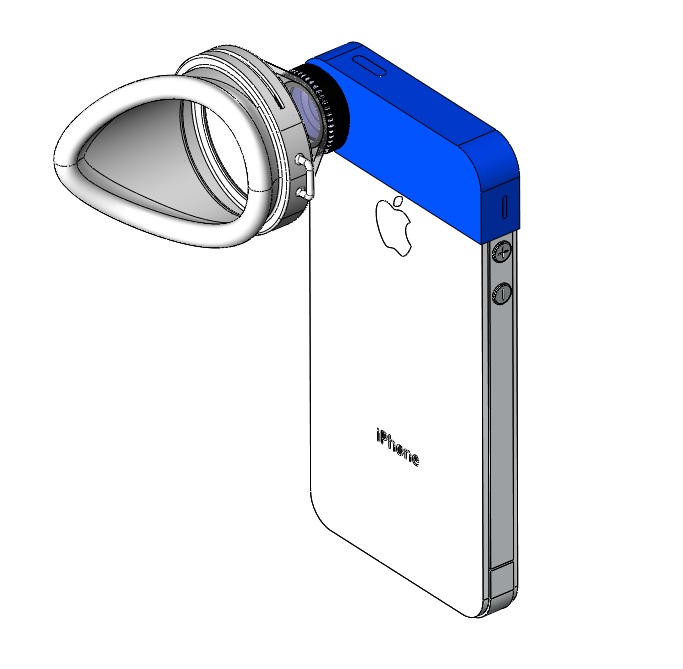Commercial
Portable Retinal Camera

PingerWare is developing a Portable Retinal Camera as a low-cost tele-ophthalmology platform based on the Apple iPhone cell phone technology. This platform will provide instantaneous visualization of the retina to be used in both screening and follow-up examinations for the preventative diagnosis of impending disease states. Early intervention will lead to healthier lives and a reduction in vision impairment or blindness.
The iPhone hardware system will be augmented with custom software that runs on its powerful OS X (UNIX) operating system and empowered by the high-speed communications link to PingerWare servers that interpret and correlate the patient retinal images over time.
Initial applications of this system will be focused on the early detection of diabetic retinopathy, glaucoma, and the onset of systemic hypertension.
Software will support the use of the Portable Retinal Camera for home use, tracking the health of your retina and alerting you when you should visit an eye care medical professional.
Cell Phone Based Portable Retinal Camera
The retinal cameras currently being sold are very expensive and PingerWare believes that with the advent of advances in optics and the cellular technology, there is an opportunity to create an inexpensive, but highly powerful portable retinal imaging device. When this device is coupled with a strong image management system in conjunction with 3D visualization, retinal microvascular abnormalities can be detected effectively and efficiently. High speed communications provides the foundation for real-time collaboration with the medical community and service providers.
Diabetic Retinopathy
The initial application of this technology will be focused on the early detection of Diabetic Retinopathy. The World Health Organization estimates that 135 million people have diabetes mellitus worldwide and the number of people with diabetes will increase to 300 million by year 2025. Almost 20 million Americans have diabetes and an additional 16 million working-age adults are pre-diabetic, meaning they are at a high risk of developing diabetes. Visual disability and blindness from diabetes have a profound socioeconomic impact. Diabetic retinopathy is the leading cause of new blindness in working-age adults in the industrialized world. It has been estimated that as much as $167M and up to 85,000 sight-years could be saved annually in the US alone by improving screening methods for diabetic retinopathy. Public pressure to improve the management of diabetic retinopathy has increased substantially, compelling the U.S. Congress to mandate reimbursement for diabetes screening in the 2003 Medicare Modernization Act of 2003.
Features
- Improved service offering to patients and referring ophthalmologists
- Fits into existing workflow
- Lower costs than existing methods
- Easy to understand, implement, and monitor patient compliance
- Integrated program for diagnosis, treatment, and follow-up
- Cost containment by preventing serious complications
Portability
- Fits in a pocket
- Self-powered
- Operates worldwide
- Incorporates illumination source
Connectivity
- Instantaneously transmittable images
- WiFi connection to laptops
- Location aware
Solutions
- Home health checking of your retina
- Screening for DR, glaucoma, and onset of hypertension
- Patient record information capture with text and audio
Outcomes
- Patient compliance is improved by bringing the camera to the patient